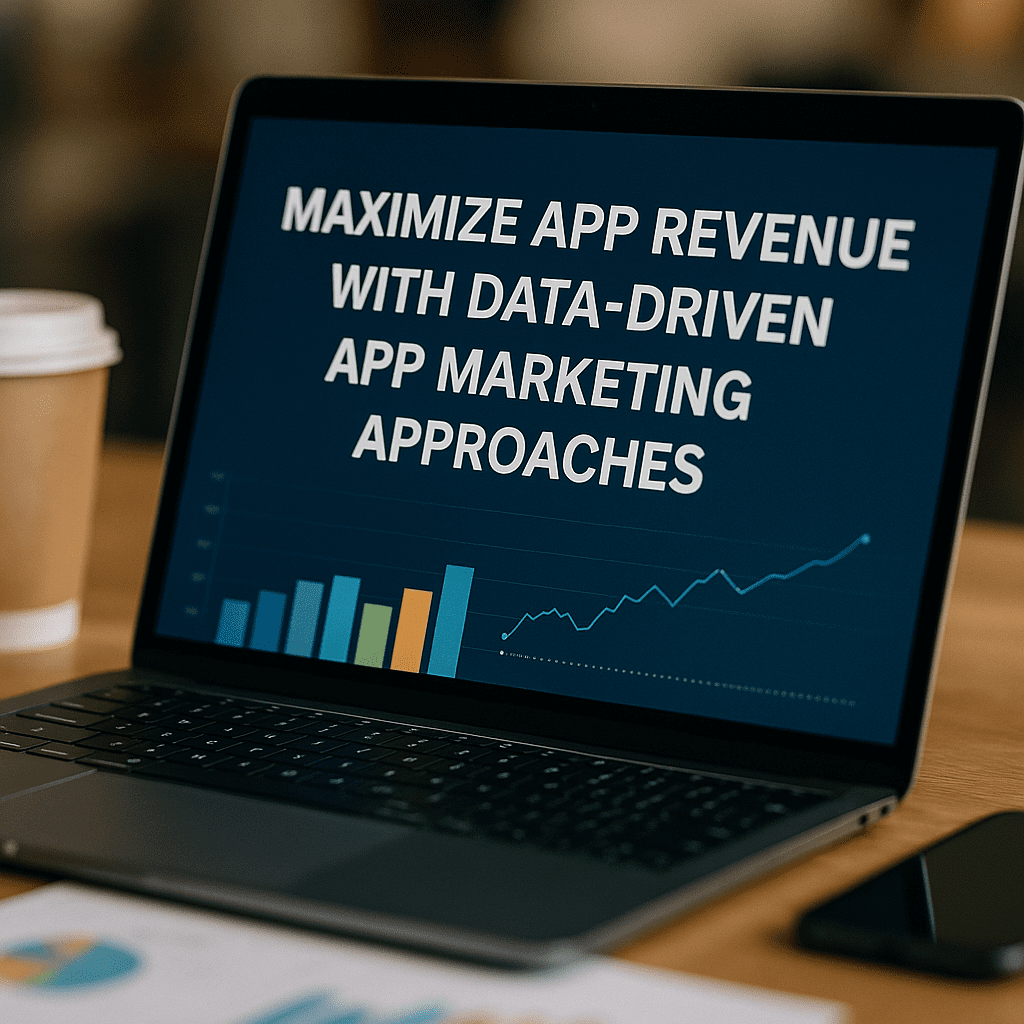
Maximize App Revenue with Data-Driven App Marketing Approaches in 2025
In today’s hyper-competitive app ecosystem, growth hinges on leveraging real insights rather than gut instinct. As we move through 2025, top-performing mobile applications are those that systematically harness user behavior, first-party data, and AI-powered automation to deliver highly personalized experiences. This guide outlines the proven strategies, case studies, and step-by-step framework that leading app growth teams use to boost retention, increase conversion, and maximize lifetime value.
The Evolution of App Marketing in 2025
The app marketing landscape has shifted dramatically in recent years. Legacy tactics such as spray-and-pray advertising, generic email blasts, and static segmentation are giving way to data-driven, privacy-first strategies that respect user preferences while driving measurable ROI. In 2025, the winning formula integrates:
- Behavioral data to fuel hyper-relevant messaging
- First-party data infrastructure for unified customer profiles
- AI and machine learning for intelligent automation
- Rigorous privacy controls to build trust and comply with evolving regulations
By adopting these pillars, brands create seamless experiences that anticipate user needs and deliver value at every touchpoint.
Why Traditional App Marketing Tactics Are Failing
As user expectations rise, the following methods are rapidly losing effectiveness:
Generic Mass Marketing
One-size-fits-all campaigns ignore individual preferences. Users quickly tune out broad promotions that fail to address their specific needs or stage in the customer journey.
Overreliance on Social Media Trends
Chasing fleeting TikTok challenges or hashtag fads without a cohesive omnichannel strategy often produces short-lived spikes in downloads but negligible long-term engagement.
Gut-Driven Decisions
Relying on intuition or vanity metrics (e.g., total installs) ignores the deeper signals users generate. Without data-backed insights, you can’t optimize funnels or predict churn.
Neglecting Mobile-First UX
Failing to prioritize in-app experience—such as onboarding flows, personalization layers, and clean UI—frustrates users and drives abandonment.
Core Pillars of Data-Driven App Marketing
1. Behavioral Data at the Heart of Personalization
Top app marketers treat behavioral data—such as screen views, feature usage, and purchase history—as the foundation of all campaigns. By triggering messages based on real actions (e.g., “You’ve completed three modules—ready for the next challenge?”), brands deliver timely, helpful prompts that feel natural and relevant.
- Reliability: Actual behaviors are less prone to inaccuracies than self-reported demographics.
- Relevance: Users perceive behavior-driven messages as genuinely useful.
- Simplicity: Anchoring personalization to clear triggers streamlines campaign design.
For implementation best practices, see Admiral Media’s guide to mobile app marketing strategy.
2. First-Party Data Infrastructure
With privacy regulations tightening, first-party data has become the most valuable asset. By unifying user records across acquisition, in-app behavior, and customer support, marketers build a single source of truth that eliminates silos and enables cross-channel orchestration.
Key components:
- Centralized data lake or CDP that ingests events from SDKs, APIs, and webhooks
- Standardized taxonomy and naming conventions to ensure data consistency
- Governance policies to control access, consent, and retention
3. AI and Automation at Scale
In 2025, AI-driven platforms aren’t just proofs of concept—they power core workflows:
- Predictive segmentation: Identify high-value users likely to churn and deploy targeted win-back offers.
- Dynamic content: Generate personalized in-app banners, push notifications, and email copy.
- Budget optimization: Auto-allocate ad spend to channels with the best real-time ROI.
- 24/7 optimization: Continuous A/B testing and learning to refine creatives and funnels.
This level of automation frees teams to focus on strategy, creativity, and cross-functional collaboration.
4. Privacy-First Personalization
Balancing personalization with user trust is non-negotiable. Leading apps adopt a transparent, consent-driven model:
- Explicit opt-in for data collection, with clear value propositions
- Easy access to privacy settings and data export capabilities
- Encryption at rest and in transit, plus SOC-2 or ISO 27001 compliance
Learn how to align personalization with privacy in our privacy-first app marketing article.
Case Studies: Real-World Success with Data-Driven Tactics
Fitness App Transformation
A leading health & fitness app saw plateauing retention despite high download volumes. By integrating behavioral analytics and AI-driven recommendations, they tailored each user’s journey:
- Workout Pathing: Personalized exercise plans based on past activity.
- Trigger-Based Reminders: Push notifications timed to user routines.
- Adaptive Content: AI-curated nutrition tips evolving with user goals.
Results after six months: 47% lift in retention, 32% rise in premium upgrades, 58% jump in daily active users.
E-Commerce App Revenue Optimization
A mid-sized online retailer faced stagnant average order values. By mapping the entire funnel—from browse to checkout—they layered behavioral triggers and personalized incentives:
- Abandoned Cart Flows: Automated emails and in-app banners with dynamic discounts.
- Recommendation Engine: AI-powered suggestions based on real-time browsing history.
- Lifecycle Campaigns: Re-engagement sequences for lapsed buyers.
Outcome: 63% increase in order value, 41% drop in acquisition cost, and 89% improvement in repeat purchase rate.
Explore more app marketing case studies to discover additional success stories.
Implementing Your 2025 App Marketing Blueprint
1. Unify Data into a Single Source of Truth
Start by consolidating all event streams—SDKs, CRM exports, webhooks—into a central CDP. This ensures every team operates with consistent user profiles and removes blind spots between acquisition, engagement, and retention.
2. Balance Personalization with User Trust
Adopt a transparent consent model. Show users the direct value of sharing data—whether it’s tailored offers, progress tracking, or faster support—and provide control over preferences.
3. Leverage Social Media and In-App Analytics
While social media analytics can uncover trending interests, the real goldmine is combining those insights with in-app behaviors. This unified perspective enables refined targeting and creative optimization.
4. Plan for the Super App Wave
Many markets are moving toward super apps—platforms bundling ride-hailing, payments, commerce, and more. Consider integration points or partnerships that place your app within broader ecosystems for higher visibility and engagement.
For a deeper look at platform integration and end-to-end data flows, review A holistic view of the mobile marketing stack with app marketing highlighted as a key component, showing data flows and integration points.
Measuring Success: Key Metrics for 2025
To prove ROI and guide optimization, monitor these KPIs:
- Customer Lifetime Value (CLV): Total projected revenue per user.
- User Acquisition Cost (UAC): Spend per new active user.
- Retention Rate: Percentage of users retained month-over-month.
- Engagement Metrics: Session frequency, screen depth, feature usage.
- Conversion Rate: Purchases, subscriptions, or in-app events completed.
Tracking these metrics in real time enables proactive adjustments and sustainable growth.
Conclusion: Leading the Future with Data-Driven Growth
In 2025, the divide between market leaders and laggards boils down to how they harness data. By unifying first-party sources, embedding AI-powered automation, and upholding privacy, app marketers can deliver personalized experiences that drive revenue and loyalty.
Adopt these proven tactics to transform your growth engine:
- Anchor campaigns in behavioral data
- Invest in a robust data infrastructure
- Scale with AI and automation
- Maintain a privacy-first mindset
Those who master this blend of technology, analytics, and user empathy will define the next era of mobile app success.
